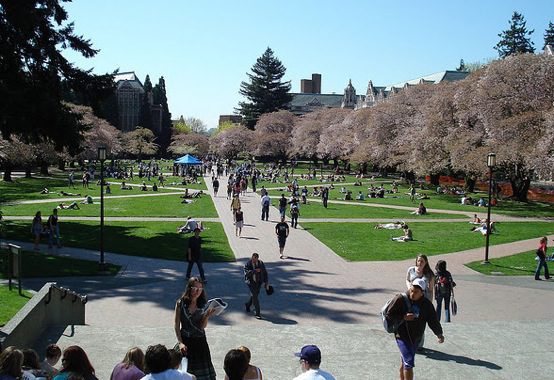How to Fix College Admissions

The Supreme Court heard Fisher v. University of Texas at Austin again yesterday. Since the arguments were much the same as the first time, it’s hard to predict what the justices will do. The paradox, essentially, is that the Court has said universities have a constitutionally permissible interest in enrolling a racially diverse class, but prohibited them from using numerical quotas. So they have to design admissions policies that just happen to produce the desired level of diversity, which cannot actually be defined without violating the 14th Amendment.
The problem with this strategy is not that it lets in vast numbers of unqualified students. It is that universities’ commitment to maintaining a specific demographic balance without applying quotas encourages opacity, and even downright dishonesty, in the admissions process.
You might say: universities simply should be prohibited from pursuing racial diversity. The thing is, they’re going to do it anyway, using indirect means if necessary.
Moreover, it’s not just “underrepresented minorities” who have a better shot at admission than their grades and scores suggest. So do athletes, legacies, and students from rural states, among others. Should universities also be banned from pursuing a social and geographic mix? Some critics of affirmative action argue admission should be strictly based on academic criteria. But I’m not convinced our great universities would be improved if they were more like CalTech.
There’s a better way to make college admissions more open and more fair. We could replace the mysterious art of crafting a class with a lottery for all qualified applicants.
In its simplest version, the process would work like this. The application would involve a checklist of more or less objective, externally verifiable criteria. These might include GPA above a certain cutoff, scores of 4 of 5 on a given number of AP tests, and so on. Extracurricular achievements could be considered. For example, there might be a box to be checked by applicants who played a varsity sport. The application could even ask about socio-economic status, allowing applicants to indicate that their parents had not attended college or that they grew up in a high-poverty census tract.
Suppose the checklist contained ten criteria. Applicants who satisfied, say, six of them would be entered into a lottery for admission. Universities would then draw an appropriate number of admits. The whole exercise would take about two seconds.
In addition to its appealing transparency, a lottery would be extremely cheap. Under this plan, universities wouldn’t have to maintain a large and highly paid admissions office. All they’d need would be a good website on which applicants could enter their information and a few IT workers to manage the database.
A lottery would also relieve stress on applicants and their parents. Rather than driving themselves nuts pursuing all possible achievements, high school students could concentrate on doing well in their strongest subjects or activities.
Critics might argue a lottery would reduce academic quality. But there’s no reason to think students taken at random from a qualified pool would be worse than those selected in head-to-head comparisons. In fact, Harvard already attracts applications from more valedictorians than it can accept.
What about diversity? In the long run, the lottery would produce a student body proportional to the demographics of the applicant pool (which would not necessarily be the same as the general population). If universities aimed to enroll classes that more closely reflected the country as whole, they could encourage applications from underrepresented groups or regions and work with K-12 schools to increase the number of applicants who met the benchmarks. Such efforts would correspond to the original meaning of affirmative action and would not require invidious racial distinctions.
The lottery plan isn’t perfect. One concern is that alumni would hate it, since it would make snobbery about where they went to college harder to justify. This could reduce donations, forcing universities to make more prudent use of their existing resources.
More broadly, elite university universities might lose a bit of their cachet. They would still attract some of the world’s most brilliant students. But they could no longer claim that their careful selection of an exquisitely curated class gives them special moral authority.
Now that I think them over, these might not be such terrible problems.
Samuel Goldman is assistant professor of political science at The George Washington University.